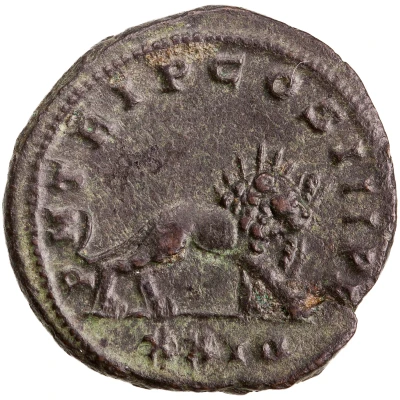Antoninianus - Probus P M TRI P COS III P P
| Silver | - | - |
| Issuer | Rome › Roman Empire (27 BC - 395 AD) |
|---|---|
| Emperor | Probus (Marcus Aurelius Probus) (276-282) |
| Type | Standard circulation coin |
| Years | 279-282 |
| Value | Antoninianus (1) |
| Currency | Antoninianus, Reform of Caracalla (AD 215 – 301) |
| Composition | Silver |
| Shape | Round (irregular) |
| Technique | Hammered |
| Demonetized | Yes |
| Updated | 2024-10-05 |
| Numista | N#293611 |
|---|---|
| Rarity index | 100% |
Reverse
Probus, in slow quadriga, riding right, holding sceptre surmounted by eagle.
Script: Latin
Lettering:
P M TRI P COS III P P
-/-//XXIT
Translation:
Pontifex Maximus, Tribunicia Potestate, Consul Tertium, Pater Patriae.
High priest, holder of tribunician power, consul for the third time, father of the nation.
Comment
Source:Online Coins of the Roman Empire (OCRE)
Interesting fact
The Antoninianus coin was introduced by the Roman Emperor Caracalla in 215 AD as a replacement for the denarius, which had been the standard Roman currency for centuries. The Antoninianus was made of silver and had a higher purity level than the denarius, which had been debased over time. The coin was named after Caracalla's adoptive father, Antoninus Pius, and it became the main currency of the Roman Empire for over a century. The Probus version of the Antoninianus, which was issued during the reign of Emperor Probus (279-282 AD), features the emperor's name and title on one side and a radiate crown on the other. The coin's design was meant to symbolize the emperor's connection to the divine and his role as the protector of the empire. Overall, the Antoninianus coin played an important role in the Roman Empire's economy and was a symbol of the empire's power and influence.

